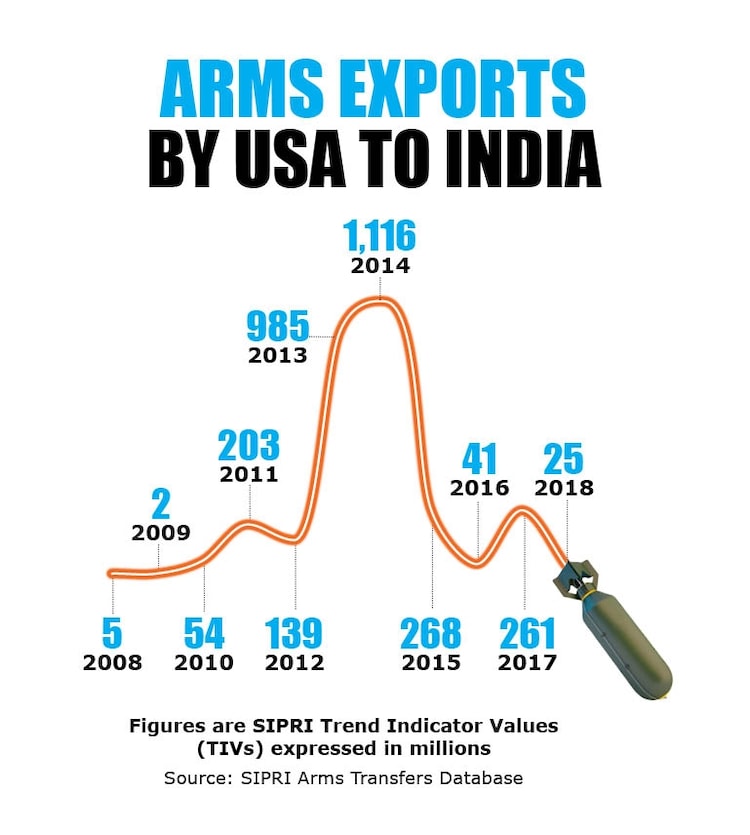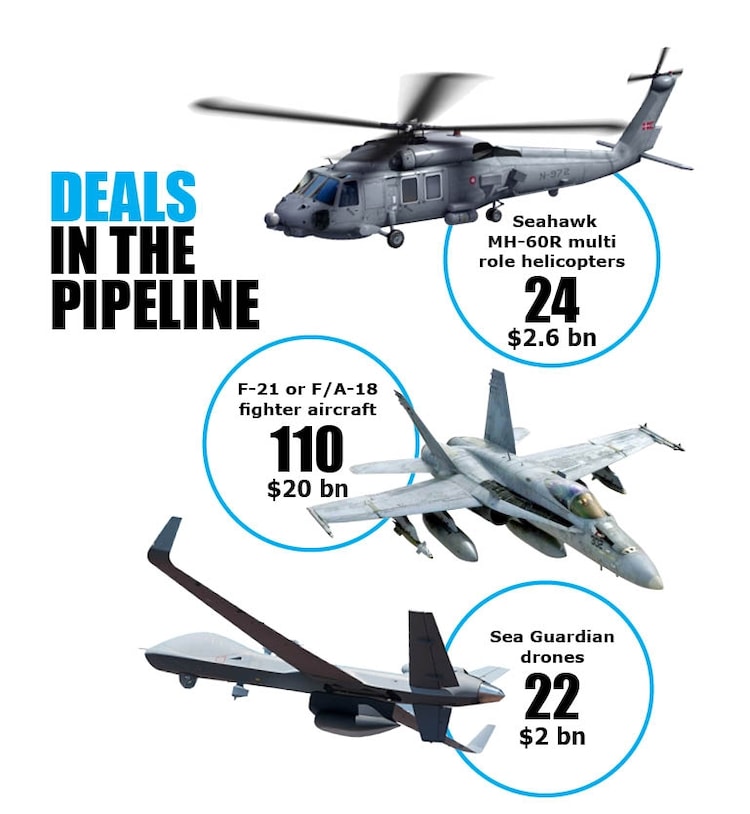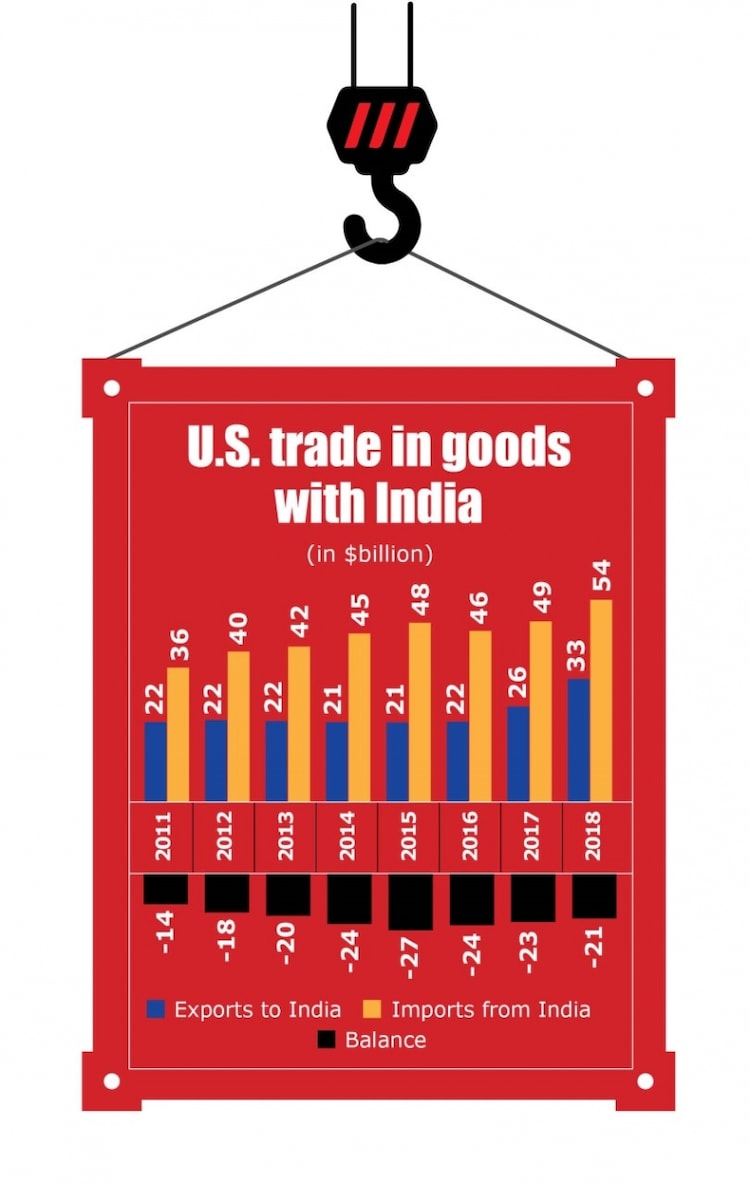Modi vs Trump: Why US President is missing wood for trees on India-US trade
President Trump's microscope on India-US trade trade deficit misses the burgeoning US arms business


President Donald Trump has in recent years targeted the US's bilateral trade partners, India and Vietnam, accusing them of levying unfair trade tariffs on US products. The gripe against India has been tariffs on the entry of US goods into India -- from Harley Davidson motorcycles, US whisky and more recently, paper. The India-US bilateral trade stood at $142.1 billion last year and India is currently the US' ninth largest goods trading partner, according to the US Trade Representative's office.
The total (two-way) goods trade between the two countries was $87.5 billion. The figure that undoubtedly gets President Trump's attention is the U.S. goods trade deficit with India -- $21.3 billion in 2018.
With China, the President's disagreements have spilled over into a fullscale trade war, understandable given the massive $419.2 billion imbalance. The President's irritation with India is still at the level of mild petulance but even these are missing the larger point.
None of the countries President Trump is targeting over tariffs have the kind of defence relationship that the US has with India. The Indo-US arms business has boomed ever since the signing of the landmark India-US nuclear deal in 2008.
Not a single US-made reactor has been sold to India. What has come instead are military transport planes, long range submarine hunters, helicopter gunships and heavy lift helicopters worth an estimated over $15 billion dollars. India is the world's second largest arms importer after Saudi Arabia. Russia remains the largest source of military hardware to India but the US is a close number two.
For reasons of national security, military deal figures are kept out of the scrutiny of bilateral trade. This perhaps is one reason why President Trump has failed to notice US arms worth over $ 5 billion that are there in the pipeline.
Or, for that matter, the $20 billion contract to domestically assemble 110 fighter aircraft in India. Two of the largest US defence firms, Lockheed Martin and Boeing Defense are in the fray for this lucrative contract.
On April 4, the Trump administration approved its largest defence sale to India-the $2.6 billion for 24 MH-60R 'Seahawk' multi role naval helicopters.
India has so far leveraged the issue of arms imports from the US very well, says Major General Mrinal Suman (retired). It is the carrot of lucrative miltiary deals kept hanging before the US that had been able to neutralise US pressure on our arms imports from Russia and oil imports from Iran.
Inarguably, these platforms have significantly enhanced the capabilities of the Indian armed forces. IAF C-17s and C-130 cargo aircraft can rapidly lift troops and equipment to the high altitude landing grounds facing China.
The navy can detect and track Chinese submarines in the Indian Ocean Region using its P-8 Poseidons, a capability likely to be enhanced with the arrival of the MH-60R helicopters.
In small but enormously symbolic moves, the Indian army has decided to equip its frontline troops with 72,000 SiG Sauer rifles to be made in the US state of New Hampshire, a key swing state in US elections.
Weapon sales like these have also helped the US cement its status as world's top military exporter in a $100 billion annual global market. The Stockholm Peace Research Institute (SIPRI) that tracks global arms military transfers says the US boosted its share of total global exports from 30 per cent to 36 per cent between 2014 and 2018.
What does the arms trade do for the United States? An April 25 fact sheet from the US state department lists two clear benefits. They are key tools of foreign policy with potential long-term implications for regional security and that 'Properly regulated defense transfers support the US defence industrial base and reduce the cost of procurement for our own military'.
Arms sales are the lifeblood of the US defense industry which directly employs over 2.4 million people. The defence industry, according to the US state department, 'represents a key part of American enterpreneurship and innovation and help maintain the United States as the world leader in the defense and aerospace sectors and ensure our armed forces sustain their military edge.' In other words, countries like India that import US arms are helping the US retain its military edge. Can the US put a cost to that?



